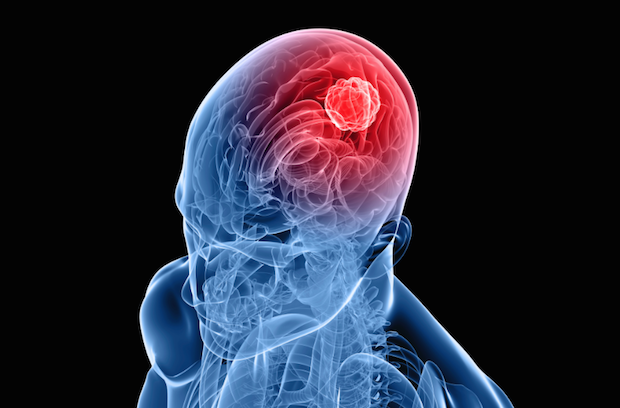The history of cancer research is one of inevitable hype and dashed hope. Though most people have been primed to believe in elusive ‘cures’, the most important news is usually about slowly strengthening imperfect treatments. Some of the most promising of these involve vaccines.
A study published recently in Nature, a top-tier journal, has demonstrated that a tetanus shot, when administered before an experimental vaccine therapy, can lengthen survival times for patients afflicted with glioblastoma multiforme, a dreadful brain cancer that is almost universally deadly.
Researchers at Duke University in North Carolina injected patients with a tetanus booster before administering a vaccine designed to target the brain tumour. Those who received the booster survived much longer than those treated with just the vaccine: half of the booster group ‘lived nearly five years or longer from their diagnosis’, said Dr John Sampson, chief of neurosurgery at Duke University Medical Centre and one of the study’s authors. Patients in the other group lived an average of only 18.5 months.
In general, survival rates for glioblastoma are dismal. Even after surgery, chemotherapy, and radiation, most patients die a year or so after diagnosis. Glioblastoma is incredibly aggressive, spreading rapidly within the brain; without treatment, death can occur within only three or four months. An additional problem is that, even if a tumour can be completely removed surgically, recurrence is almost guaranteed.
According to Duke, researchers ‘looked for a way to prime the immune system to be on high alert’ before administering the cancer vaccine. ‘They chose to use a shot of tetanus/diptheria toxoid – which is widely available and safe as a clinically approved vaccine – to incite the troops of lymphocytes [immune cells] in the lymph nodes.’
Put simply, they prepped the immune system before introducing the vaccine, thus ensuring a stronger immune response.
The Duke study was small, involving only 12 patients, but the results are significant for understanding immune-based cancer treatments. The Duke researchers were able to learn more about how their vaccine worked by using a mouse model of the therapy. This led them to important findings about how a protein called CCL3 helped stimulate more immune activity.
Since glioblastoma almost always comes back after initial treatment, exploiting immune memory holds the most promise for long-term survival. The body’s ability to recognize and destroy a returning malignancy is, at least in theory, a possible way around the problem of recurrence.
In crafting their tumour vaccine, Duke researchers focused on an interesting but controversial fact about glioblastoma. Most of the disease’s tumours contain cytomegalovirus (CMV), which is absent in surrounding tissues. Targeting CMV, then, could mean a way to attack the tumour without damaging healthy portions of the brain. CMV also figures into other glioblastoma treatments, such as using a drug called valganciclovir, an antiviral medication, as an adjunct to standard care.
The link between CMV and glioblastoma, however, remains disputed. Certain studies have demonstrated the presence of CMV in glioblastoma tissues. Other studies have confirmed this; still others have questioned the findings. Though the relationship between the virus and the cancer is unknown, one peer-reviewed paper on CMV and glioblastoma from October 2014 states that “CMV encodes many genes that may enable hallmarks of cancer such as pro-angiogenic signaling [i.e., the creation of small blood vessels that feed tumours], immune evasion, and deregulation of the cell cycle’.
Cancer is notorious for sidestepping the body’s natural immune functions. This, unfortunately, is only one of the obstacles to creating viable immune-based treatments.
For their vaccine, the Duke researchers used dendritic cells, which are critical to the human immune response. As the US National Institutes of Health explains: ‘These cells are taken from the patient, engineered to express antigens from the tumour to create a vaccine, and then injected back into the patient.’
The dendritic cells go to work by presenting the antigens to other immune cells and recruiting them to attack the tumour. Though they had been observed in the skin as early as 1868, dendritic cells were not discovered as important immune cells until 1973, when physician and biologist Ralph Steinman found them while working under the well known immunologist Zanvil Cohn. Steinman’s research eventually demonstrated the cells’ role in initiating the human immune response.
Since then, dendritic cells have formed the basis of vaccine therapies for both cancer and immune disorders like HIV. Steinman shared the 2011 Nobel Prize in Physiology or Medicine for his work on dendritic cells and immunity. Sadly, however, he succumbed to pancreatic cancer just before he was to be told of his award. He had used his own dendritic cell therapy to add a few years to his life.






Comments